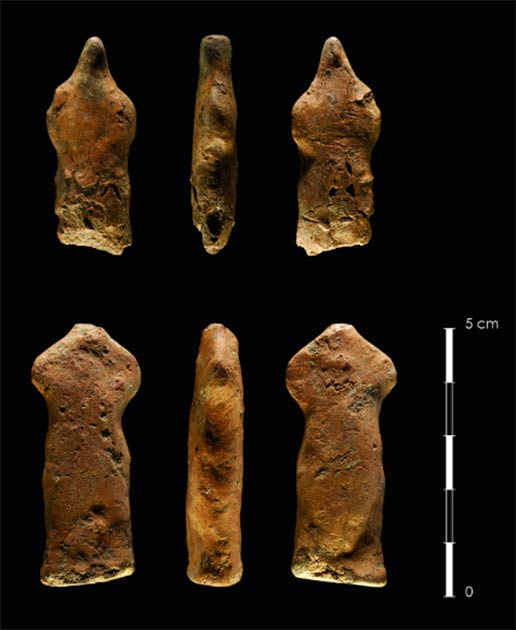10,000-Year-Old Neolithic Figurines Discovered in Jordan Burials
From classical paintings of crucified Messiahs to Damien Hirst’s starkly grim tanks of pickled sharks, death is a subject that has haunted artistic imaginations throughout the ages.
As it turns out, a trove of archaeological discoveries in Jordan suggests that death and an unusual process of digging up the deceased may have sparked an important ancient artistic revolution in Early Neolithic Asia: the jump between artworks depicting animals to portraying humans.
Reported in the journal Antiquity, archaeologists from the Spanish National Research Council and Durham University in the UK developed this idea while studying a number of unusual objects discovered at the site of Kharaysin in the Zarqa river valley, Jordan, dating to the 8th millennium BCE.

The team was initially stumped by the jagged objects, thinking they must be tools, until they came to realize they were actively crafted into crudely-shaped human bodies, complete with broad shoulders, slim waist, and wide hips.
“One of the excavators suggested they were figurines, which the rest of the team were skeptical about,” lead author Dr. Juan José Ibáñez said in an email statement. “However, the more we studied, the stronger the idea appeared.”

The figures appear to have been crafted around the 7500 BCE, about a century after depictions of humans became more common in the Early Neolithic communities of Western Asia. But, what drove humans in the Zarqa river valley to start making human sculptures 9,000-10,000 years ago?
By no coincidence, the researchers say, the figurines were found in an area used by the Early Neolithic communities of the Zarqa river valley to bury their dead.
Among the seven original burials found here, a number of the remains appear to have been dug up following an initial burial and the partial decomposition of bodies, manipulated – in some cases bones were removed or muddled up in an unusual mortuary practice – and then reburied.
The placement of the figurines to these burials suggests they were carelessly dropped, but actively deposited in specific areas. Assembling all of these odd pieces of evidence together, the researchers put forward the hypothesis that the figurines were part of a burial ritual.
Although precise details remain unclear, it’s suggested the figurines were used as a physical representation of the dead to honor the community’s ancestors, a practice that’s well documented during this time.
“These rituals probably included remembrance of the deceased. The presence of ‘figurines’ suggests that individuals could have been symbolically depicted in flint with a simple technical gesture. If this were the case, the ‘figurines’ were discarded where they were used,” the researchers write in their paper.
The roughly shaped figurines alone might not be enough to convince some of this theory, but the conclusion was backed up by comparisons to other examples of figurines from the Neolithic Zarqa river valley.
For example, archaeologists also discovered a similar set of figurines that clearly depicted humans at another Neolithic site in Jordan, ‘Ain Ghazal.
Much older depictions of humans can be found elsewhere in the world; the 35,000-years-old Venus of Hohle Fels, found in modern-day Germany, is the oldest undisputed depiction of a human being.
However, in Early Neolithic culture in present-day Jordan, human iconography has not been found until around the time of these unusual funerary ceremonies. From this point onwards, it appears that humans became a recurring subject of artistic creations in this part of the world.
Perhaps, as the researchers outline in their study, this “artistic revolution” was triggered by this ceremony of digging up the dead and honoring lost ancestors.





